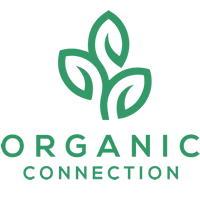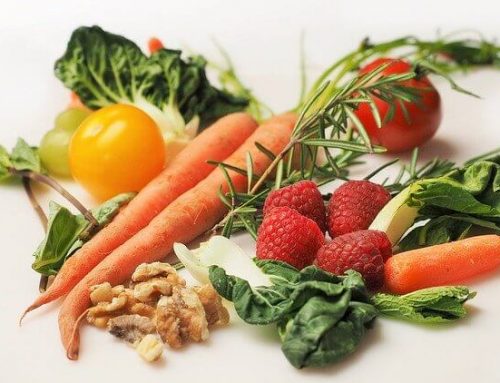
Growing crops in healthy soils result in food products that offer healthy nutrients.
There is mounting evidence that organically grown fruits, vegetables, and grains may offer more of some nutrients, including vitamin C, iron, magnesium and phosphorus, and less exposure to nitrates and pesticide residues than their counterparts grown using synthetic pesticides and fertilizers.
- Reviewing 41 published studies comparing the nutritional value of organically grown and conventionally grown fruits, vegetables, and grains, certified nutrition specialist Virginia Worthington has concluded there are significantly more of several nutrients in organic crops. These include 27% more vitamin C, 21.1% more iron, 29.3% more magnesium, and 13.6% more phosphorus. In addition, organic products had 15.1% fewer nitrates than their conventional counterparts. She also noted that five servings of organic vegetables (lettuce, spinach, carrots, potatoes, and cabbage) provided the recommended daily intake of vitamin C for men and women, while their conventional counterparts did not.
Source: “Nutritional Quality of Organic Versus Conventional Fruits, Vegetables, and Grains,” by Virginia Worthington, published in The Journal of Alternative and Complementary Medicine, Vol. 7, No. 2, 2001 (pp. 161-173)
- Organic crops appear to be higher in vitamin C, essential minerals and phytonutrients, according to the 87-page report prepared for The Soil Association of the United Kingdom and released during 2001.
Source: “Organic Farming, Food Quality, and Human Health: A review of the evidence,” written and researched by Shane Heaton, The Soil Association, United Kingdom, 2001.
- A study commissioned by the Organic Retailers and Growers Association of Australia (ORGAA) found that conventionally grown fruit and vegetables purchased in supermarkets and other commercial retail outlets had ten times less mineral content than fruit and vegetables grown organically.
Source: Organic Retailers and Growers Association of Australia, 2000, as cited in Pesticides and You, Vol. 20, No. 1, Spring 2000, News from Beyond Pesticides/National Coalition Against the Misuse of Pesticides.
- A comparative study conducted by researchers at the Research Institute of Organic Agriculture (FiBL) in Switzerland found that organically grown apples were of higher quality than conventionally grown apples with respect to parameters that relate to health and taste (taste score, sugar-acidity-firmness index, nutritional fiber content and other factors used for quality assessment).
Source: “Are organically grown apples tastier and healthier? A comparative field study using conventional and alternative methods to measure fruit quality,” F.P. Weibel, R. Bickel, S. Leuthold, and T. Alföldi), Acta Hort. 517: 417-427 (2000).
- A study has shown that organic soups sold commercially in the United Kingdom contain almost six times as much salicylic acid as non-organic soups. Salicylic acid, which is responsible for the anti-inflammatory action of aspirin, has been shown to help prevent hardening of the arteries and bowel cancer. The average level of salicylic acid in 11 brands of organic vegetable soup was 117 nanograms per gram, compared with 20 nanograms per gram in 24 types of non-organic soup.
Source: New Scientist magazine, March 16, 2002, page 10; European Journal of Nutrition, Vol, 40, page 289.
- Research by visiting chemistry professor Theo Clark and undergraduate students at Truman State University in Missouri found organically grown oranges contained up to 30 percent more vitamin C than those grown conventionally. Reporting the findings, Clark said he had expected the conventional oranges, which were much larger than the organic oranges, to have twice as much vitamin C as the organic versions. Instead, their scientific testing revealed the higher level in the organic oranges.
Source: Science Daily Magazine, June 2, 2002
Meanwhile:
- Reporting on its study examining pesticide residues in food bought around the country, Consumer Reports, January 1998, noted: “Our side-by-side tests of organic, green-labeled, and conventional unlabeled produce found that organic food had consistently minimal or nonexistent pesticide residue.”
Source: “Greener Greens? The Truth about Organic Food,” Consumer Reports, January 1998, page 13.
- Analyzing U.S. Department of Agriculture’s Pesticide Data Program data comparing the relative amounts and toxicity of pesticide residues in different food, a Consumer Union report found that fresh peaches, frozen and fresh winter squash, apples, grapes, spinach, pears, and green beans had some of the highest Toxicity Index ratings. As a result, the Consumers Union recommended purchasing organically grown apples, peaches, pears, grapes, winter squash, prune, spinach and green beans.
Source: “Do you know what you’re eating? An analysis of U.S. Government Data on Pesticide Residues in Food,” February 1999, Consumers Union of United States Inc., Edward Groth III, project director.
- Organic fruits and vegetables have only a third as many pesticide residues as their conventionally grown counterparts, according to a study by Consumers Union (CU) and the Organic Materials Review Institute. Study findings are based on pesticide residue data collected by the U.S. Department of Agriculture, from tests conducted on foods sold in California by the California Department of Pesticide Regulation, and from tests by Consumers Union. Data covered more than 94,000 food samples from more than 20 crops, with 1,291 of the samples organically grown. USDA data showed 73 percent of conventionally grown foods sampled had residue from at least one pesticide, while only 23 percent of organically grown samples of the same crops had any residues. When residues of persistent, long-banned organochlorine insecticides such as DDT were excluded from the analysis, organic samples with residues dropped from 23 to 13 percent. More than 90 percent of USDA’s samples of conventionally grown apples, peaches, pears, strawberries and celery had residues. The California data found residues in 31 percent of the conventional food, and 6.5 percent of the organic products. Tests by the Consumers Union, meanwhile, found residues on 79 percent of conventionally grown samples and 27 percent on the organic products.
Source: Food Additives and Contaminants, May 8, 2002. Also, see www.omri.org.
Reprinted with permission from the Organic Trade Association. The Organic Trade Association is the leading business association representing the organic industry in the United States, Canada, and Mexico. Its more than 1200 members include growers, processors, shippers, retailers, certification organizations and others involved in the business of producing and selling certified organic products. www.ota.com






